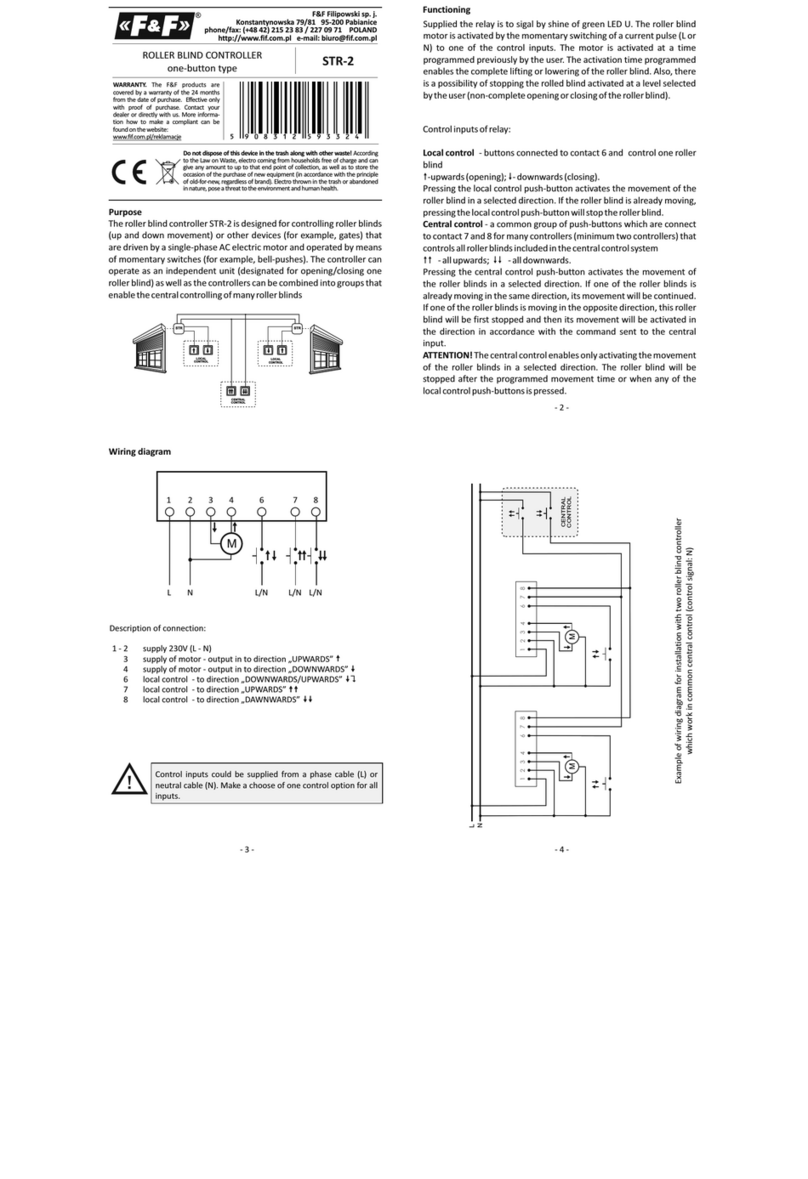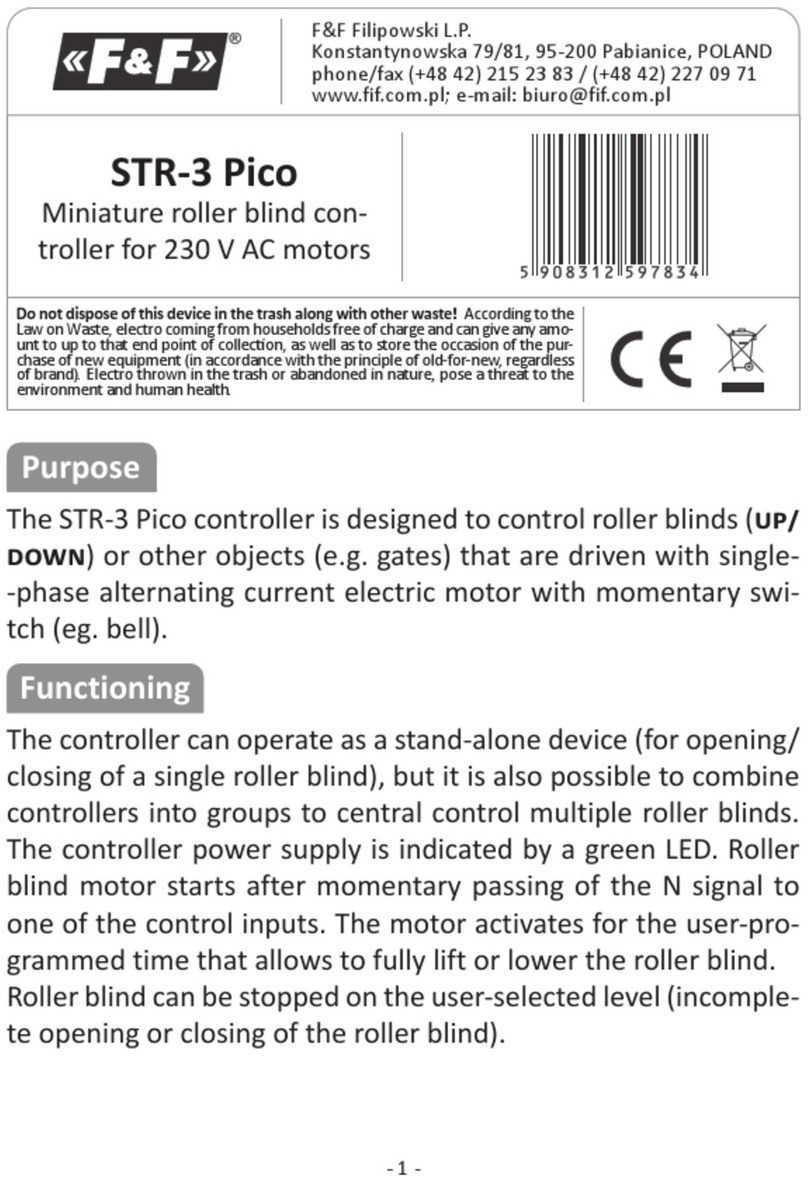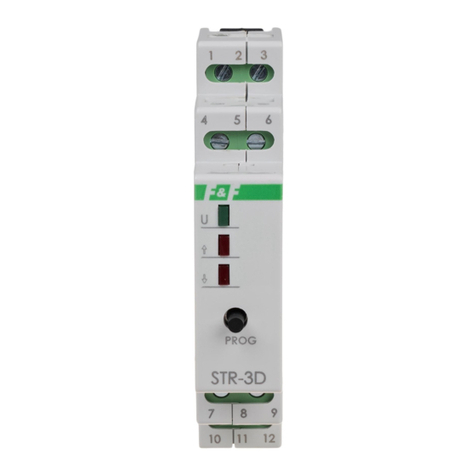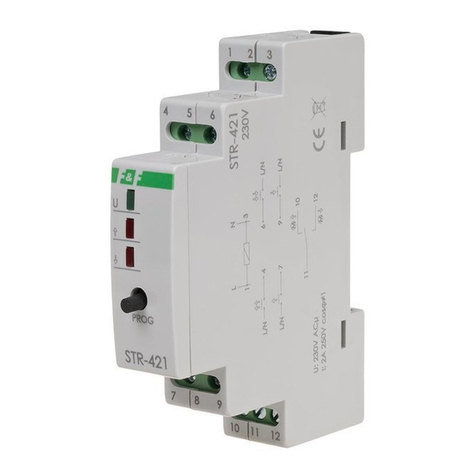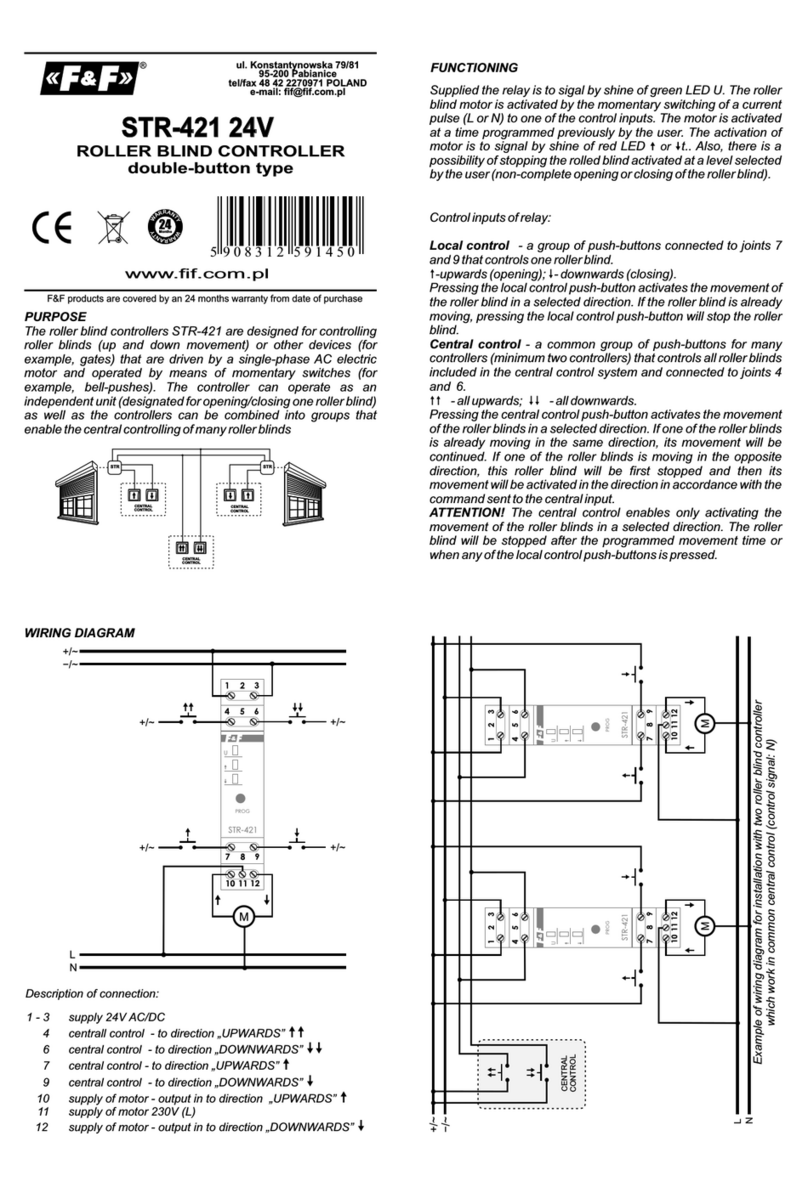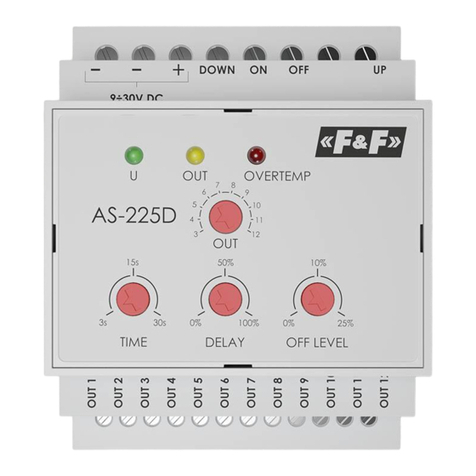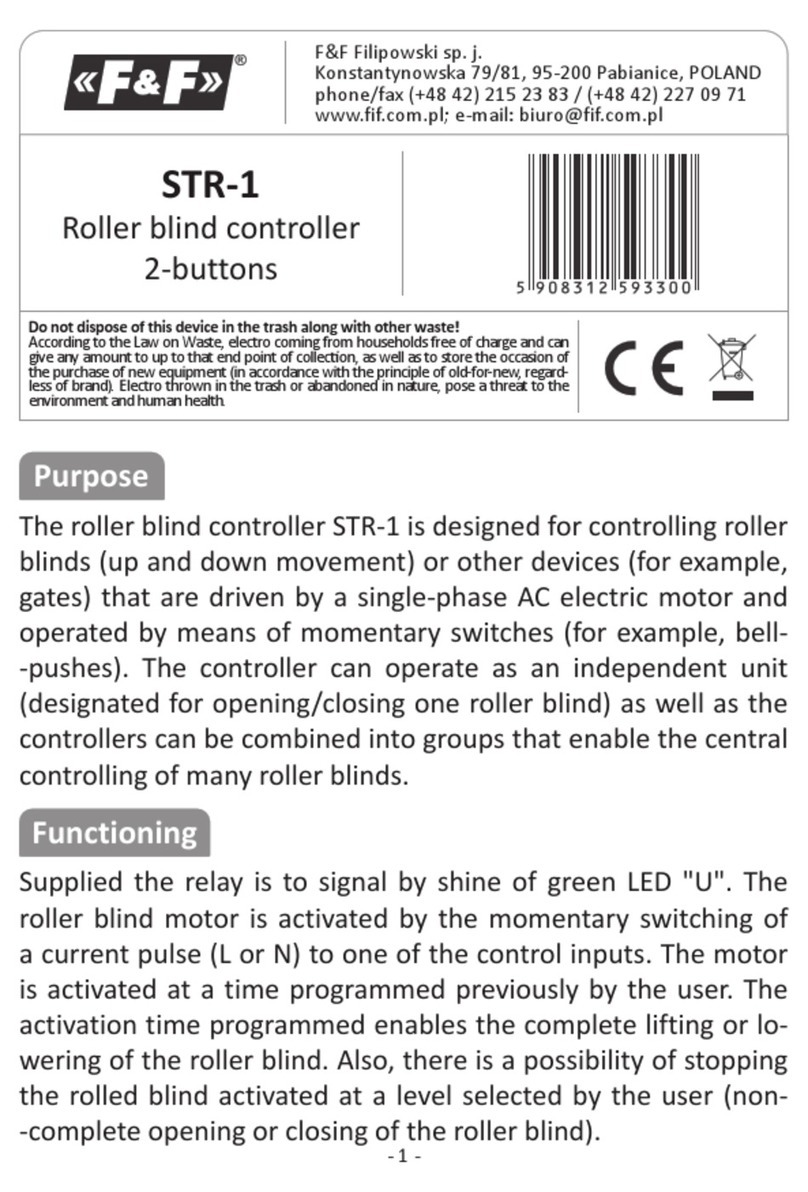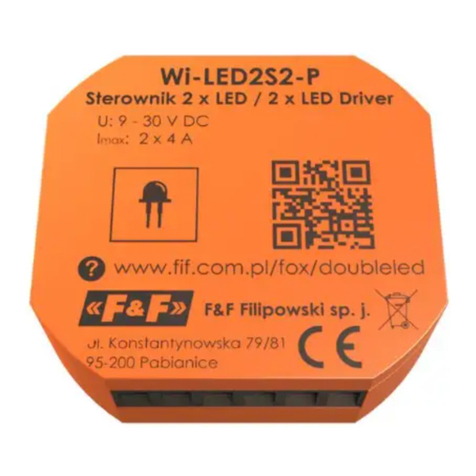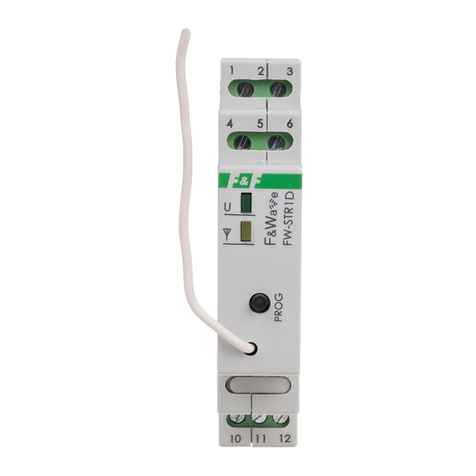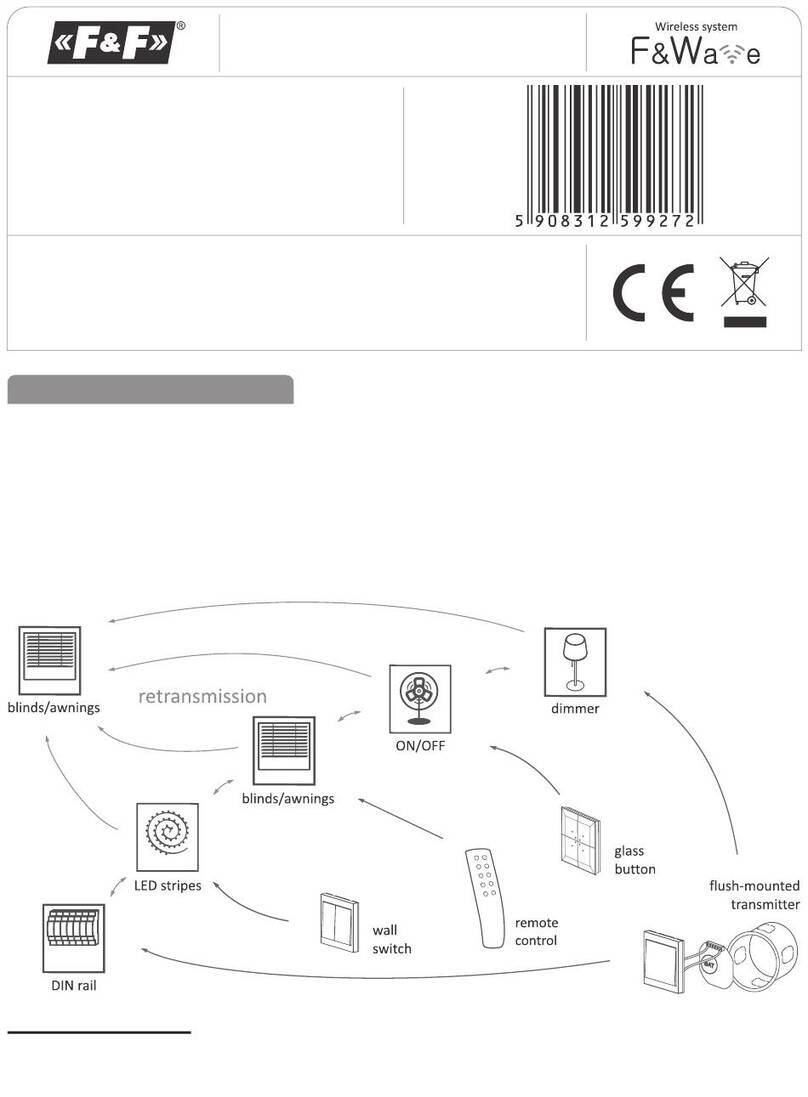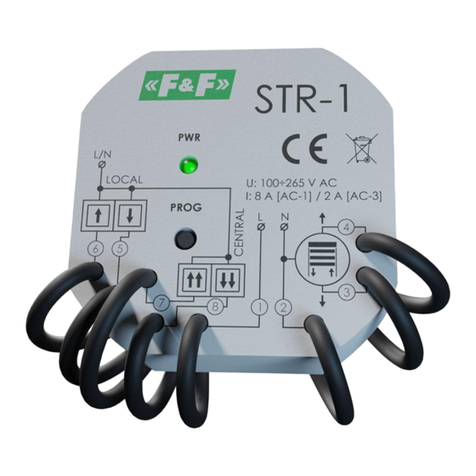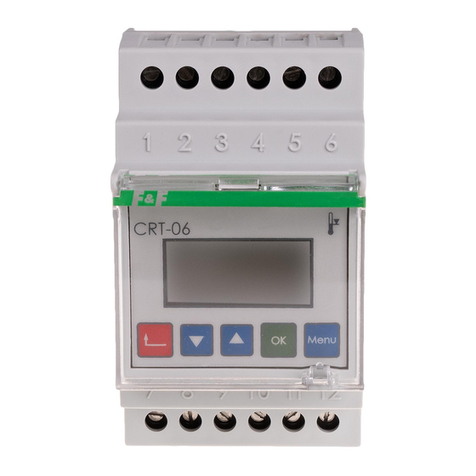
- 9 -
power supply 10÷27 V DC
maximum load current (AC-1) 6 A
power consumption
standby 0.15 W
on 0.6 W
control triggered with 10÷27 V DC level
switch-on time (adjustable) 1 s÷15 min.
power signalling LED green
operation and movement direction signalling 2×LED red
working temperature -25÷50°C
terminal 2.5 mm² screw terminals
tightening torque 0.4 Nm
dimensions 1 module (18 mm)
installation on TH-35 rail
protection level IP20
F&F products are covered by a 24-month warranty from the date
of purchase. The warranty is only valid with proof of purchase.
Contact your dealer or contact us directly.
F&F Filipowski sp. j. declares that the device is in conformity
with the essential requirements of The Low Voltage Directive
(LVD) 2014/35/EU and the Electromagnetic Compatibility (EMC)
Directive 2014/30/UE.
The CE Declaration of Conformity, along with the references to
the standards in relation to which conformity is declared, can
be found at www.fif.com.pl on the product page: www.fif.com.pl
from the product subpage.
Technical data
Warranty
CE declaration
E211214
Mode with 2 local buttons
1-3 power supply 10÷27 V DC
4 central control – ↑↑ direction
6 central control – ↓↓ direction
7 local control – ↑ direction
9 local control – ↓ direction
10 motor power supply – terminal A
12 motor power supply – terminal B






